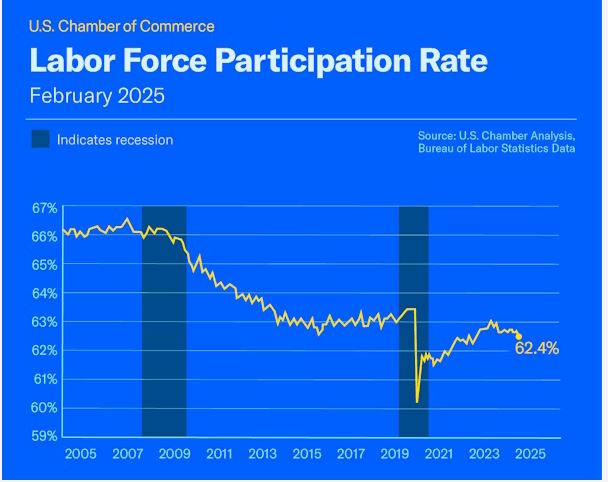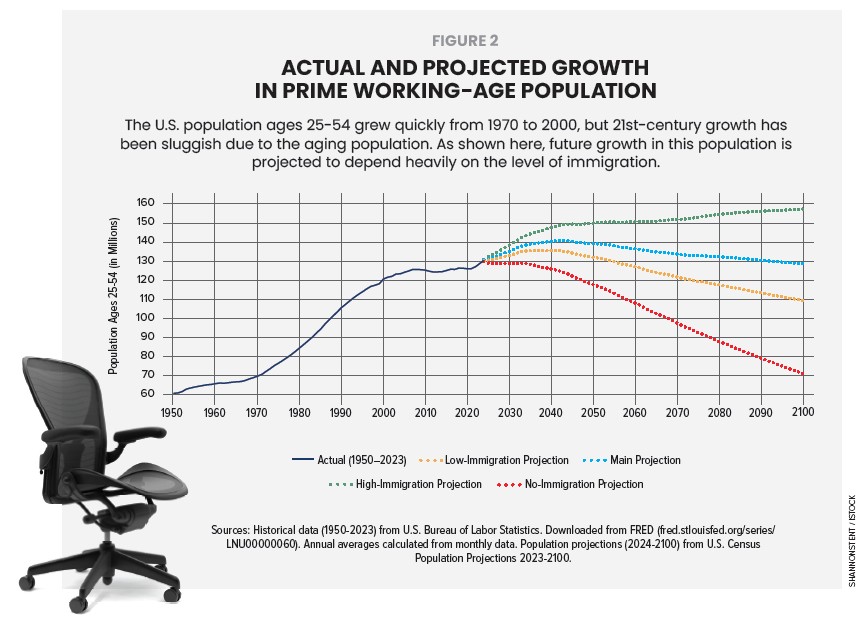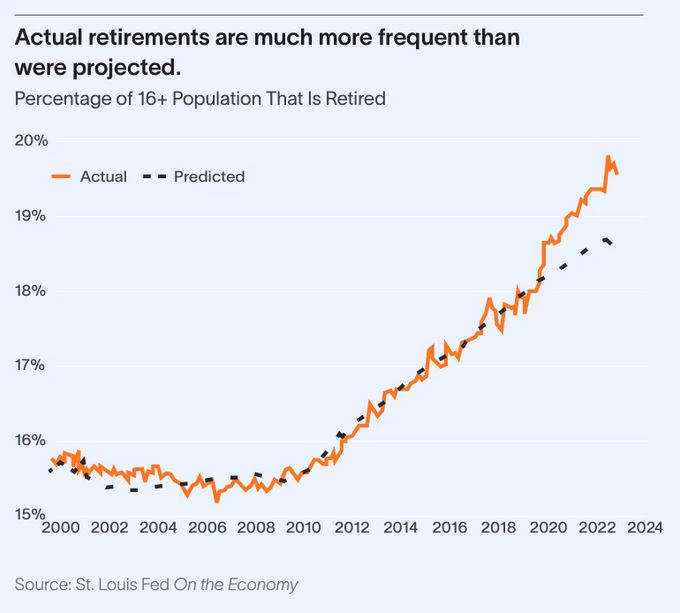Several recent reports issue warnings about a large and looming labor shortage – one that will have effects for most employers, industries, and states – but some industries such as healthcare and hospitality/travel are likely to face greater impacts. In the spirit of “forewarned is forearmed,” we’re offering links to three reports. Each describes the factors contributing to the labor shortage and recommendations for how employers will need to address this,
U.S. Chamber of Commerce – America Works Data Center
America Works is one of the US Chamber of Commerce’s major initiatives, with a goal of “Helping your company and our country solve our workforce challenges.” Through the America Works Initiative, they specifically address the worker shortage, saying that the result is. “Too many businesses can’t grow, compete, and thrive. And too many workers can’t realize their American dreams.”
This is from their latest report, accessible by the link above. They offer many other workforce resources.
The latest jobs report from the Bureau of Labor Statistics showed that thousands of people are entering the workforce. In June 2024, the labor force participation rate for prime working-age individuals, defined as those between the ages of 25 and 54, was 83.7%, marking a twenty-year high. Despite this, however, total labor force participation does not match what it was before the pandemic.
If the percentage of people participating in the labor force were the same as in February 2020, we would have millions more people in the workforce today—and this shortage is impacting all industries in nearly every state. If every unemployed worker took an open job in their industry, there would still be millions of open jobs.
See their reports on Understanding America’s Labor Shortage: The Most Impacted Industries and Understanding America’s Labor Shortage: The Most Impacted States.

SHRM: US Labor Shortage Looms: Who Will Do the Work?
U.S. workforce growth is expected to slow over the next decade, highlighting the urgent need for employers to prepare now.
The U.S. Bureau of Labor Statistics (BLS) projects that 6.7 million jobs will be added to the economy by 2033. However, the number of workers available to fill those jobs is expected to be constrained by an ongoing wave of retiring Baby Boomers, slowing population growth among working age adults, and immigration levels coming up short of what’s needed to maintain employment growth.
Although the number of Americans ages 16 and older is projected to increase by 16.4 million people by 2033, that’s 5 million less than the increase that occurred in 2013-2023. On top of that, there are already hundreds of thousands of open jobs without people to fill them for reasons such as a mismatch of skills and some people deciding not to take part in the labor force.
While employment is projected to grow 0.4% annually through 2033, population growth isn’t expected to keep up because the largest increase is projected among older people, who are less likely to work. As a result, there will be a continued decline in the labor force participation rate, dropping from 62.7% in August 2024 to a projected 61.2% in 2033, says Kevin Dubina, an economist in the BLS Office of Occupational Statistics and Employment Projections.
Among the report’s recommendations:
- Planning Is Critical. Employers also need to do a better job with strategic workforce planning, Lezotte says. “That means understanding who you will need, how many [people] you will need, and when you will need them.”
- Skills Are Currency. Increasing employer reskilling and upskilling is another solution to retaining workers in the labor force.
- Value Is Vital. Ultimately, organizations must continuously upgrade their employer value proposition to attract and retain the people they want in a competitive job market.
- Immigration Is Essential. Due to a declining percentage of native-born prime-age workers in the U.S., immigration is absolutely necessary to replenish the workforce.

The Rising Storm: A Demographic Drought Report
This comprehensive report by Lightcast, a global leader in labor market analytics, sounds the alarm about an impending labor crisis that will have major ramifications. The report uses the metaphor of a storm, likening the tight labor market from 2021 to 2023 as “a precursor, or outer band” of the storm..
“Before the end of the decade, the US will face a shortfall of roughly 6 million workers. For the first time in history, more people will turn 65 than 16, depleting our working population while our overall population increases. With labor force participation dropping, how can we make up the difference.”
There are various contributing factors cited in the report, including:
- Retiring Baby Boomers are an enormous cohort of 76 million Americans, with fewer younger workers coming to take their place, and this is leading to shortages in industries across the economy.
- Labor force participation for working-age men has been falling.
- Addiction and Incarceration are taking prime-age men out of the labor market.

You can visit the summary page, but we would recommend downloading the full 69-page report. It is broken into four chapters:
- Chapter 1 covers the Baby Boomers’ labor market
- Chapter 2 covers the present and recent past as Boomers have retired
- Chapter 3 covers landfall and the decade to come.
- Chapter 4 covers solutions.
The report also discusses industry-specific needs and solutions. To meet labor needs, the report suggest that employers in various sectors will need some combination of these strategies.
- Local Workforce Development
- Globalization: Push Work to Other Countries
- Automation
- Immigration: Pull Workers in from Other Countries

